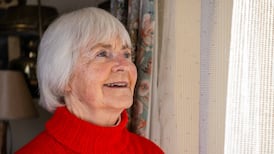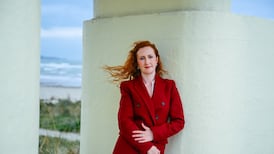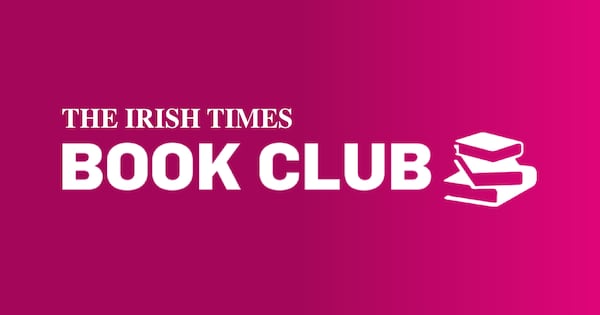Have we been well served by our taoisigh? This collection of essays on the 16 holders of that position to date will leave readers well placed to make their own assessments. Originally a podcast series, the essays have been assembled and edited by Iain Dale, a London-based broadcaster who has also worked on series covering British prime ministers and US presidents. The contributors are a mix of historians, political scientists and journalists, who provide an array of perspectives, tones and approaches to ably document what has remained a male domain.
In writing the foreword, current Taoiseach Micheál Martin spikily suggests that while there is more media coverage than ever of politics, most of that revolves around short-term framing, lacking sufficient breadth, with the sad result that “my staff have for many years tried to persuade me out of accepting invitations to give speeches on policy or history, arguing that the most effective way of staying out of the media is to give a substantive speech”.
Martin hails the defeated republicans from the Civil War who won power with Éamon de Valera at the helm in 1932 and then introduced “new and rigid limits on its own powers” through the 1937 Constitution. Yet Eoin O’Malley, in elaborating on the evolution of the office of taoiseach, suggests it has been seen as one of the more powerful head-of-government positions internationally, given its co-ordinating functions, policy analysis role and control of the agenda of cabinet meetings.
The taoiseach also has power to hire and fire ministers and dissolve the Dáil, unlike the situation in the 1920s when the leader of government was styled the “president of the executive council”. Over the decades, with the emergence of coalition governments and the increased influence of NGOs, courts and tribunals, there was some reshaping of the role, with some of its power diminished.
‘Christmas is never complete unless I re-read it’: Irish bookworms’ recommendations
The Hollywood History of Art: cinema’s ‘tortured artist’ myth has real-world impact
Translated fiction: Explorations of trauma, loss, exile and memory
Alice Taylor at 87: ‘Life happens, things go wrong, but look for the good in people and appreciate things’
The Constitution formally introduced the title of taoiseach; that year, civil servant Maurice Moynihan was appointed secretary of the taoiseach’s department and served in that position for almost 24 years. He wrote a pamphlet in 1960 on the functions of the department and described the taoiseach as “the captain of the team”.
“In this capacity, he is the central coordinating figure, who takes an interest in the work of all departments, the figure to whom ministers naturally turn for advice and guidance when faced with the problems involving large questions of policy or otherwise special difficulty, and whose leadership is essential to the successful working of the government as a collective authority.”
But Moynihan does not merit a mention in this book; by and large the mandarins remain invisible, which is a pity, given their integral role.
The editor asked the contributors “to avoid the usual academic niceties” such as footnotes and references and to “write in an accessible manner”. But these two things are not mutually exclusive and, unfairly, some of the research and writing that informs these essays remains unattributed, which also dilutes the potential of the book as a stimulus to further research.

The chapters providing an overview of the captains and the contexts in which they worked are nonetheless absorbing. Most of our taoisigh were not born to the silver spoon and most were educated by the Christian Brothers. Ciara Meehan suggests WT Cosgrave (as president of the executive council) from 1922-32, has been unduly neglected; the shadow of Civil War executions loomed large when he was in power but the commitment to sustaining democracy was also paramount during that decade. It is notable that Cumann na nGaedheal by the late 1920s was often referred to as the “Cosgrave Party”, which is “a clear indicator of the strong association in the public mind of the party with his leadership and of his significant influence”.
[ Archive editorial: Civil war cast a long shadow through State’s historyOpens in new window ]
David McCullagh elaborates at greater length on de Valera (“No Irish person is ever likely to serve longer as head of government”). He highlights Dev’s self-serving pragmatism, as when he insisted in 1926, the year FF was established, in relation to the oath of allegiance to the British crown, “neither I, nor any member of FF will ever take that oath. That is final, and I hope clear.” In his characteristically wry style, McCullagh notes “it was clear, but as it turned out, not final”.
When Dev assumed power, William Norton, the leader of the Labour Party, provided one of the most memorable descriptions of him: “he can throw a somersault on the edge of a razor blade and when you express amazement he will say there are heaps of room for everybody to do it”. A master tactician, with a tendency to call snap elections, Dev often acted with his “trademark dignity”. It is fair to conclude that during his career “he gave priority to the state while talking about the nation” and was not prepared to trade sovereignty for unity.
The essay on Fine Gael’s John A Costello by Charles Lysaght is more personal and observes that he was “prone to lose the run of himself and blurt out things when he got to his feet”. He was primarily a belligerently fluent lawyer rather than a politician and a kind, devout and obedient Catholic. He was also reluctant to take on the taoiseach’s job and “genuinely fearful he would not be a success”. Collegiality led to long, meandering cabinet meetings but also laxity around cabinet procedures. He concluded it was futile “waiting for FG to overtake FF”; in working with others, he instead ensured alternative governments to FF were possible. Lysaght sees him as a man who had a “disinclination ever to place himself on a pedestal”.
When Seán Lemass took on the role in 1959 he had decades of experience behind him, including his time as minister for supplies during the Emergency when he had unprecedented power. Bryce Evans focuses on the less attractive sides of Lemass; his tribalism and “an impatient and liberal disdain for democracy”. He argues “his gradual and conditional economic liberalization was not as full throttle as some have suggested” but that his encouragement of a North-South Irish thaw was “before its time”. As with all our taoisigh, there are things we do not know, including the impact Lemass’s accidental shooting dead of his 19-month-old brother Herbert in 1916 had on him, or the murder and butchering of his brother Noel in 1923.
Stephen Collins profiles Jack Lynch very favourably; he was another man reluctant to push himself to the forefront, but had to deal with the politics of the outbreak of the Troubles and the derision of some of his colleagues (“let him in so long as he does what we tell him” was the view of Kevin Boland). It seems dispiriting that the year before he became taoiseach, a magazine observed, “It is often said that he is too straight and honest for his calling.”
Liam Cosgrave, combining discipline, taciturnity, “personal integrity” and “subdued leadership of FG”, was always, argues Deirdre Foley, happier talking about his father, WT, than himself.
Charles Haughey, according to Gary Murphy, with his “patrician hauteur” and what one observer called “a gruesome control”, was “unarguably the most talented and influential politician of his generation”, but such an assertion is arguable. In the late 1970s, only one question consumed Haughey: “how to become Taoiseach”. When he got there, his “desperation to remain in power trumped everything else”.
There is something sad about the spectre of a man who was “strangely hamstrung in office … essentially a lonely man with few real friends in politics and he trusted almost no one”. Garret FitzGerald, maintains Eoin O’Malley, had an “obsession with detail” that could paralyse him, yet his “passion and self-belief would energise those around him”.

The tenure of Albert Reynolds was brief but, as the late Martin Mansergh suggests, his “self-confidence and advancement came from varied and adventurous practical experience” in business, and he castigated “the paralysis of analysis” which we are still debating today. His leadership style was that of a “managing director” who liked to discuss problems rather than rely on memorandums, and a good overview is provided of the peace-process back channels and the frenetic high-wire politics that surrounded it.
[ Martin Mansergh: Mandarin who quietly nudged this island towards peaceOpens in new window ]
Former editor of the Irish Farmers Journal Matt Dempsey admires John Bruton’s “moral courage” and his conviction that “Europe needed to increase the democratic visibility to its public”. Mick Clifford documents a Bertie Ahern “who went out of his way not to make enemies”, with a combination of charm, capacity to absorb insults and “keep ploughing on, eyes firmly fixed on the finish line”. That was a crucial strength during the peace process, yet “at no point did he elucidate any kind of vision for the country”. His dogged work ethic was undermined by a “focus on the next election to the exclusion of most other considerations”.
Theresa Reidy profiles Brian Cowen, who gave a sense that he was “not prioritising state interests sufficiently over the interests of FF”. Abrasive and tribalistic, he was undoubtedly committed to public service but could not handle the challenges he faced.
Understandably, journalists rather than historians write about the last four taoisigh. Harry McGee suggests there were few expectations of Enda Kenny, and he surpassed them easily; he could be unguarded and unfocused but employed his energy and optimism well. Leo Varadkar, notes Philip Ryan, “always faced accusations of being more focused on style over substance”.
Micheál Martin, according to Gavan Reilly, demonstrated impressive command of detail and preparedness to tackle long-overdue reform as a minister, but struggled to take such momentum into the taoiseach’s office: “journalists quickly noted how sub-clauses were inserted inside sub-clauses, so that some sentences were never actually completed, abandoned in favour of a safer thing to say”. Pat Leahy dwells on Simon Harris’s preoccupation with social media and habit of making announcements but struggling to match their promise.
The passage of time will undoubtedly lead to revision of some of the assessments here and shift the emphasis placed on various aspects of these premierships. But for the time being, this book is a fine primer.
Diarmaid Ferriter is professor of modern Irish history at UCD. His book, The Revelation of Ireland 1995-2020 (Profile Books), is now available in paperback.














